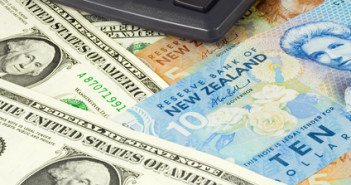The NBNZ Business Confidence Index measure the levels of business confidence in the New Zealand economy. The index is based on a survey of a wide range of businesses, including manufacturers, retailers and service providers. A reading which is better than the market forecast is bullish for the New Zealand dollar.
Here are the details and 5 possible outcomes for NZD/USD.
Published on Thursday at 1:00 GMT.
Indicator Background
Business Confidence is a critical component for economic growth. An increase in confidence indicates that consumers are purchasing the goods or services that businesses have to offer, which in turn is a sign of increased economic activity.
The index was down sharply in May, posting a reading of 27.1 points. This was the lowest figure since last December. Another poor reading in June would be a sign of weak confidence in the economy by the business sector.
Sentiment and Levels
The New Zealand economy has showed some signs of strength, such as a stellar GDP earlier in June. However, the worsening fiscal crisis in the Euro-zone and the absence of QE3 in the US will continue to weigh on the kiwi, as investors looking for safety flock to currencies like the US dollar and Japanese yen. So, the overall sentiment is bearish on NZD/USD towards this release.
Technical levels from top to bottom: 0.8185, 0.8060, 0.80, 0.79, 0.7810 and 0.7723.
5 Scenarios
- Within expectations: 27.0 to 33.0 : In this scenario, NZD/USD could show some slight fluctuation, but it is likely to remain within range, without breaking any levels.
- Above expectations: 33.1 to 36.0: A strong reading could push the pair above one resistance line.
- Well above expectations: Above 36.1: A sharp rise in business confidence could propel NZD/USD upwards, and two or more resistance lines could fall.
- Below expectations: 24.0 to 26.9: A lower than expected reading could pull the pair downwards, with one support level at risk.
- Well below expectations: Below 23.9: A very poor reading will hurt confidence in the kiwi, and NZD/USD could drop below two or more support levels.
For more on the kiwi, see the NZD/USD.
